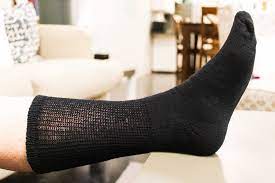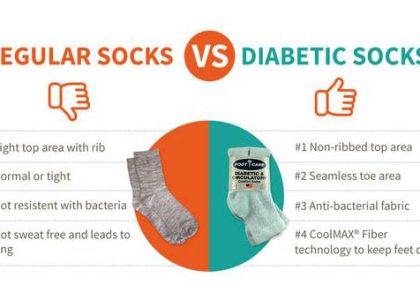MSSDiabetes is a chronic condition that requires careful management, including proper foot care. Foot problems are common among people with diabetes, so wearing the right socks is essential. Diabetic socks, such as Ankle Socks, are specially designed to prevent foot injuries, infections, and other complications associated with diabetes. But with so many options available, how do you know which diabetic socks are right for you? This article discusses the top features to look for when buying diabetic socks.
Why Are Diabetic Socks Important?
People with diabetes are at an increased risk of developing foot problems such as neuropathy, poor circulation, and foot ulcers. Wearing diabetic socks can help prevent these problems by providing adequate cushioning, reducing pressure, and improving circulation. Diabetic socks are designed to keep your feet dry, comfortable, and healthy, which is crucial for those with diabetes.
Top Features to Look for When Buying Diabetic Socks
When shopping for diabetic socks, several features ensure you get the best quality product for your needs.
Seamless Toe
should have a seamless toe design to prevent rubbing and irritation on the toes. This feature is especially important for those with neuropathy or other foot problems that make the skin more vulnerable to blisters and sores. A seamless toe reduces the risk of foot injuries and enhances the overall comfort of the sock.
Non-Constricting Fit
socks should fit comfortably without being too tight or too loose. A non-constricting fit allows for proper circulation, which is crucial for people with diabetes. Socks that are too tight can impede blood flow, while socks that are too loose can bunch up and cause irritation. Look for socks with a loose top or no binding elastic to ensure a comfortable fit.
Moisture-Wicking Properties
from materials that wick away moisture from the skin to prevent bacterial growth and reduce the risk of fungal infections. Moisture-wicking properties also help keep the feet dry, reducing the risk of blisters and sores. Look for socks made from synthetic or wool materials that are breathable and quick-drying.
Padded Sole
Diabetic socks should have a padded sole to provide extra cushioning and protection for the feet. This feature is especially important for those with neuropathy or other foot problems that can make the feet more vulnerable to injuries. A padded sole also helps distribute pressure evenly across the foot, reducing the risk of pressure sores and blisters.
Breathable Material
socks should be made from breathable materials that allow air to circulate around the feet. This feature helps prevent excessive sweating and odour, which can be a problem for those with diabetes. If you are looking for Ankle Socks, look for socks made from natural or synthetic materials that are lightweight and breathable.
Compression
Compression socks are designed to improve blood flow and reduce swelling in the legs and feet. They can be beneficial for those with diabetes who have circulation problems, but it’s essential to choose the right level of compression for your needs. Too much compression can be harmful and can lead to further circulation problems. Always consult with your healthcare provider before using diabetic socks.
an essential tool for managing foot health for those with diabetes. When shopping for diabetic socks, look for features like a seamless toe, non-constricting fit, moisture-wicking properties, padded soles, breathable material, antimicrobial treatment, and compression. Consider your specific needs and preferences, including the type of diabetes, activity level, climate, and budget, when choosing diabetic socks. With the right socks, you can keep your feet healthy, comfortable, and free from complications associated with diabetes.









